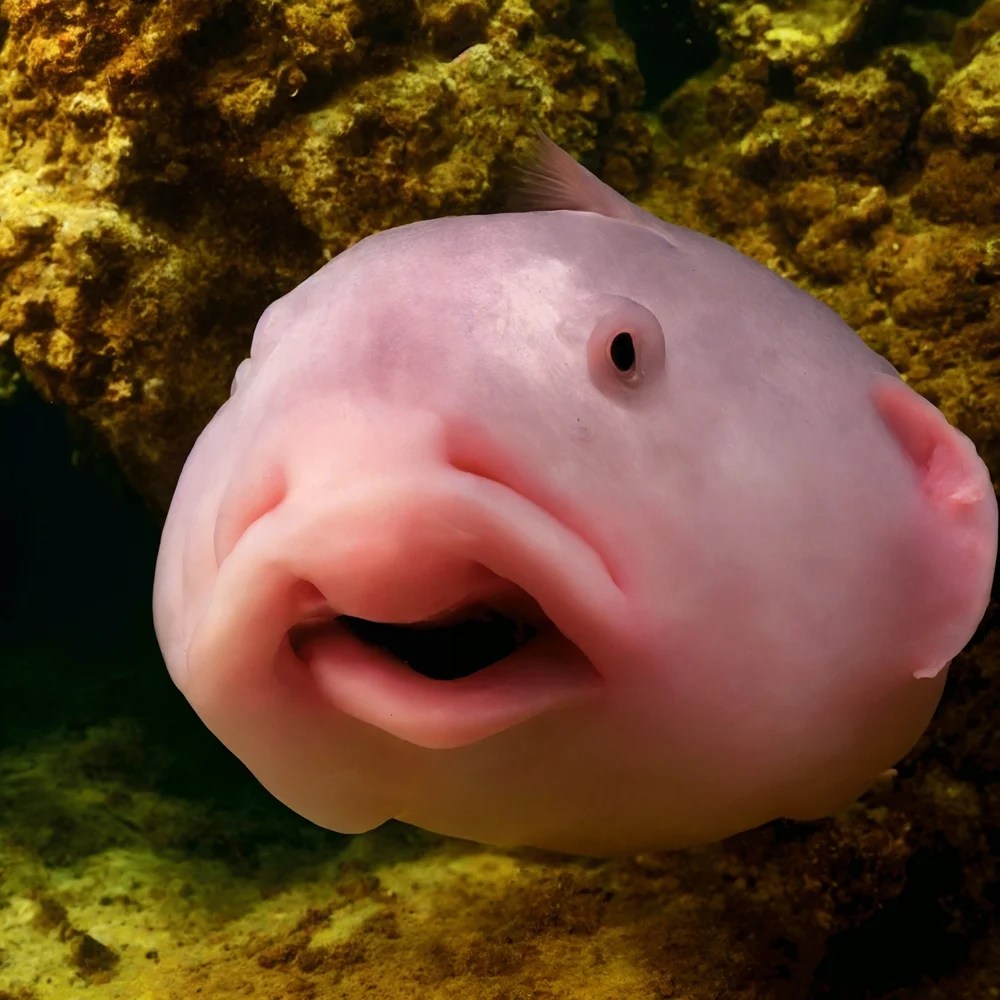The blobfish is often dubbed as the "world's ugliest fish," yet it possesses a charm that captivates those who delve into its unique world. Found in the deep waters off the coasts of Australia and New Zealand, the blobfish has adapted to an environment that many other creatures cannot withstand. Its gelatinous body is a marvel of evolution, specifically designed for life in extreme depths where pressure is immense, and light is scarce. The blobfish is not just a figure of ridicule; it is a fascinating example of how life can thrive in the most inhospitable conditions.
As we explore the life of the blobfish in water, we uncover the myriad of adaptations that allow it to survive. This quirky creature has evolved a body composition that is less dense than the surrounding water, enabling it to float effortlessly just above the ocean floor. This buoyancy aids in its feeding habits, allowing it to consume soft-bodied invertebrates and other food sources without expending much energy. However, as we dive deeper into the blobfish's world, we also discover the threats it faces due to human activity and environmental changes.
Understanding the blobfish in water requires a closer look at its habitat, behaviors, and the ecological role it plays in the marine environment. From its peculiar appearance to its remarkable adaptations, this fish has a story worth telling. Join us as we embark on a journey through the depths of the ocean, unraveling the mysteries of the blobfish.
What is the Biological Classification of the Blobfish?
The blobfish belongs to the family Psychrolutidae, which encompasses various species known for their gelatinous bodies. Its scientific name is Psychrolutes marcidus, and it primarily resides at depths ranging from 600 to 1,200 meters. Blobfish are primarily found in the waters near Australia and New Zealand, where they inhabit the sea floor, relying on their unique adaptations to thrive in such extreme conditions.
How Does the Blobfish Adapt to Its Environment?
Blobfish have an intriguing adaptation that allows them to survive under immense water pressure. Their bodies are composed of a gelatinous substance that is less dense than water, enabling them to float effortlessly. This adaptation is crucial for their survival as it allows them to conserve energy while searching for food. Additionally, their lack of a swim bladder, which many fish use for buoyancy, means they rely solely on their unique body structure to navigate the depths.
What Do Blobfish Eat in Their Deep-Sea Habitat?
Blobfish primarily feed on soft-bodied invertebrates such as shrimp, sea urchins, and other small marine animals. Their feeding technique is quite passive; they hover above the ocean floor and wait for food to come within reach. This method of feeding is energy-efficient, allowing them to thrive in an environment where food can be scarce.
What Threats Does the Blobfish Face in Today’s World?
Despite their unique adaptations, blobfish face numerous threats in their natural habitat. Overfishing and deep-sea trawling have significantly impacted their populations. As bycatch, blobfish are often caught unintentionally and discarded, leading to a decline in their numbers. Additionally, climate change poses a significant threat as it alters their habitat and affects the availability of food sources.
How Can We Help Protect the Blobfish and Its Habitat?
Protecting the blobfish and its environment requires concerted efforts from both individuals and organizations. Here are a few actions that can contribute to their conservation:
- Support sustainable fishing practices to reduce bycatch.
- Advocate for marine protected areas to safeguard their habitats.
- Raise awareness about the importance of deep-sea ecosystems and the creatures that inhabit them.
- Participate in conservation programs and support research focused on deep-sea life.
What Are Some Fascinating Facts About the Blobfish?
The blobfish is full of surprises, and here are some fascinating facts that you may not know:
- Blobfish can change their shape based on their environment, appearing more robust in water and more gelatinous when out of water.
- They are often mistaken for being dead when brought to the surface due to their floppy appearance.
- The blobfish’s unique appearance has made it an internet sensation, with memes and jokes circulating widely.
- Despite their reputation, blobfish are not aggressive and pose no threat to humans.
Conclusion: Embracing the Blobfish in Water
The blobfish in water is a testament to nature's ingenuity. While it may not fit the traditional mold of beauty, its unique adaptations and role in the marine ecosystem are invaluable. As we learn more about these fascinating creatures, it becomes clear that they deserve our respect and protection. By raising awareness and taking action, we can ensure that future generations will have the opportunity to marvel at the blobfish in its natural habitat. Let us celebrate the blobfish, not for its appearance, but for its remarkable resilience and the ecological wonders it represents.
Understanding The Paradox Of Wealth: Mo Money Mo Problems
Exploring The Legacy Of Bon Jovi's "Livin' On A Prayer"
Mavis: The Heart And Soul Of Hotel Transylvania


